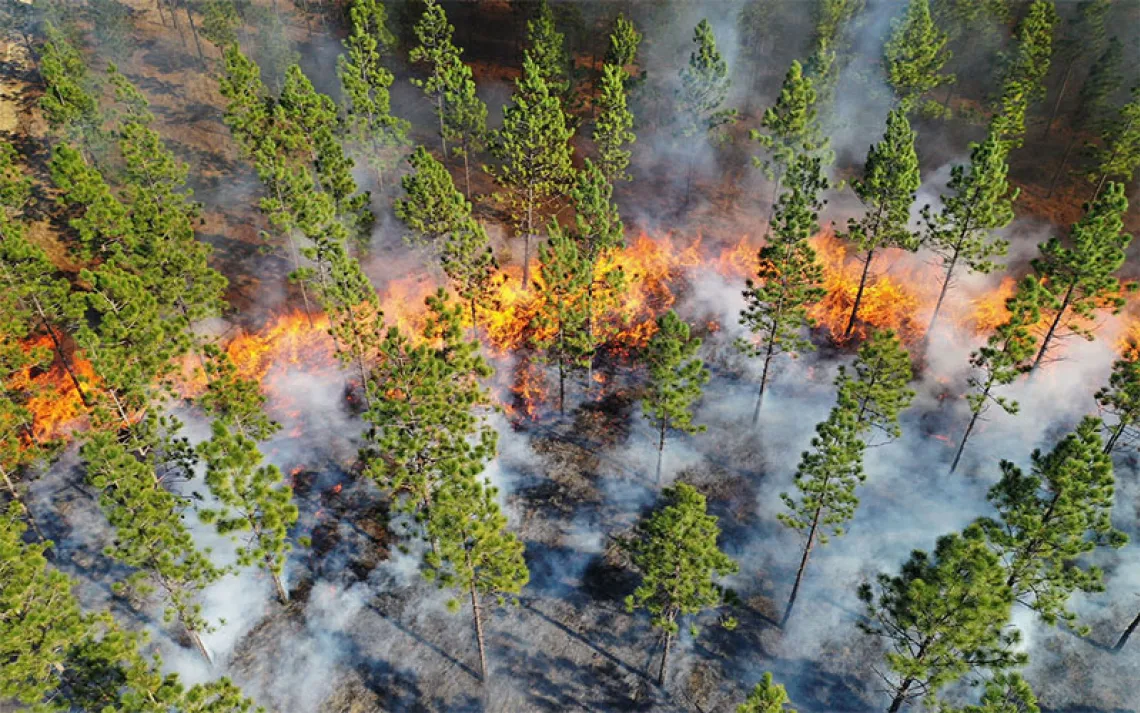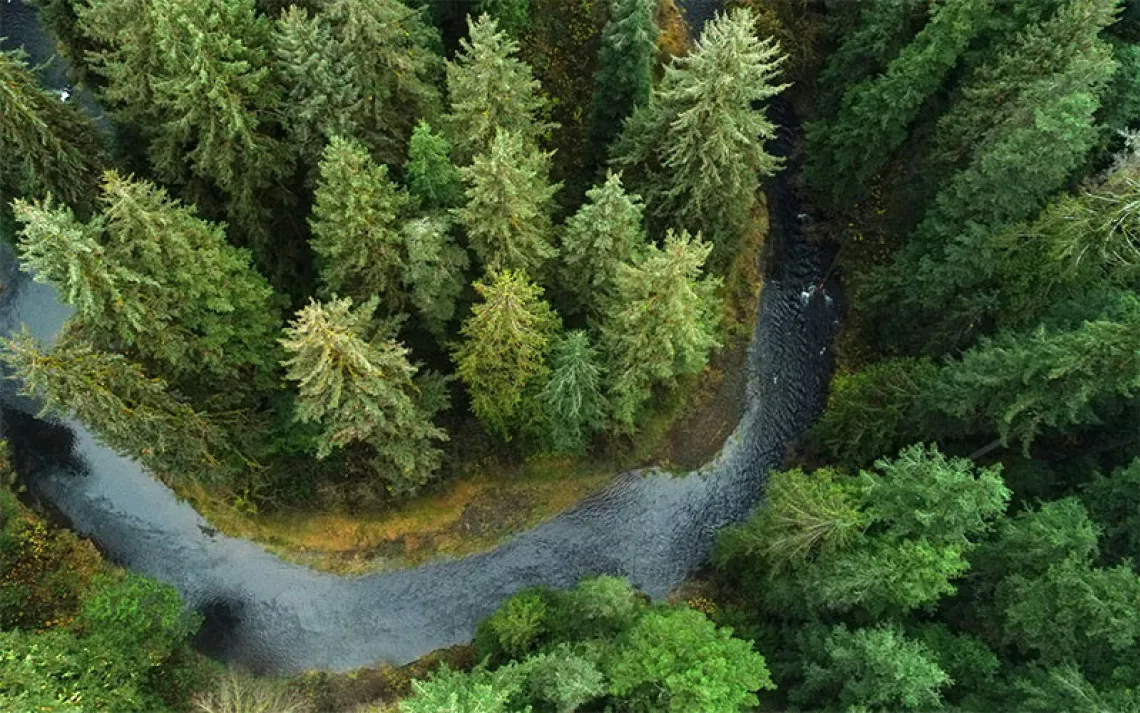Forest Conservation Is Part of the Climate Conversation Too
A new report and platform show how saving and restoring forests are key

Photo by zlikovec/iStock
When it comes to discussions about climate change, things like clean energy, carbon credits, and even climate engineering get a lot of attention. But one important solution has gotten lost in the mix: conserving forests. That’s why the North Carolina–based Dogwood Alliance, a group that advocates for southern forests, just released a new platform and report focusing on the role of America’s forests in solving the climate crisis.
One of the most efficient ways to pull carbon dioxide out of the atmosphere and sequester it for decades, or even centuries, it turns out, is by having healthy, diverse forests that store it in tree roots, wood, and leaves. The older the tree, the more carbon it can store.
But according to a new report called “Seeing the Forest,” forest resources in the United States aren’t usually seen as part of the climate solution. The EPA doesn’t currently count the carbon sequestration of forests in its CO2 models. Even more, industrial logging in forests in the Southeast is reducing forest cover four times faster than land is being stripped in the Amazon.
Danna Smith, executive director of the Dogwood Alliance, says it’s time to start treating our forest lands as a climate resource.
“In the U.S., forests need to be a big piece of the climate conversation,” she says. “When left standing, they pull carbon out of the atmosphere and are natural protection from extreme weather events. I think the best technology for fighting climate change is not tech at all. Its forests and it’s letting forests grow.”
To help facilitate that conversation, Dogwood also spearheaded the new #Stand4Forests platform signed on to by over 200 scientists, activists, and organizations, including the Leonardo DiCaprio Foundation, the NRDC, the Sierra Club, and Bill McKibben. The hope is that the platform will give elected officials and activists an organizing tool that they can use to educate people about forests and climate change and advocate for forest protection.
The report makes a compelling case for using the power of forests to fight climate change. According to research cited in the document, stopping global deforestation, restoring degraded forests, and expanding woodlands could reduce global annual greenhouse emissions by 75 percent alone. Add to that a reduction in fossil fuel use and the world has a viable path to reaching its climate goals.
But reaching a point where our forests are growing and not shrinking would take a lot of public support and political will. The southern United States in particular produces 20 percent of the pulp and paper in the world as well as 12 percent of other wood products. Studies show people in heavily forested counties have some of the worst poverty rates in the country; in parts of rural Georgia and North Carolina, for example, logging is often seen as one of the few economic bright spots.
While much of the wood logged is used for pulp and lumber, one product growing in popularity is especially troubling for the climate: wood pellets for electricity generation.
The European Union Renewable Energy Directive requires utilities to produce 20 percent of energy using clean, renewable sources by 2020. Wood is currently classified as a carbon-neutral resource, and many countries are replacing coal-burning plants with wood-biomass-burning plants, sourcing their fuel from forests in the southern United States. Supporters claim that as long as the logged forests are replanted with trees, the carbon emitted by burning them will eventually be reabsorbed by new forests. However, that process can take decades or even hundreds of years to complete, adding more carbon to the atmosphere in the short term. It also means forests lose the sequestration power of older trees, which can suck up significantly more emissions than saplings.
While the logging industry in the South claims that wood pellets are primarily produced using limbs, sawdust, and other forestry byproducts, Smith says that Dogwood and other environmental groups have documented logging operations taking down whole forests to produce the pellets—meaning Europe’s quest for clean energy could be exacerbating the destruction of American forestland. Europe recently reauthorized the use of wood biomass as a renewable to reach its 2030 clean energy goals despite the objections of 800 scientists and a study suggesting biomass use would bump Europe’s emissions up by 10 to 15 percent by 2050. In the United States, members of Congress and the EPA have been pushing to redefine biomass as carbon-neutral as well, meaning southern forests could face even more pressure if biomass catches on here.
Which is to say, forests need all the protection and attention they can get right now. Viewing forest protection through the lens of climate change just might be what is needed for policymakers to pay attention.
“Logging forests is a triple whammy,” says Smith. “There are the carbon emissions created by cutting the forest, the lost opportunity to reduce carbon emissions in the atmosphere, and the loss of ecosystem services like controlling flooding and the cooling effect. All these things combine to catalyze us to say we have to start calling out industrial logging as a problem in the U.S.”
 The Magazine of The Sierra Club
The Magazine of The Sierra Club



